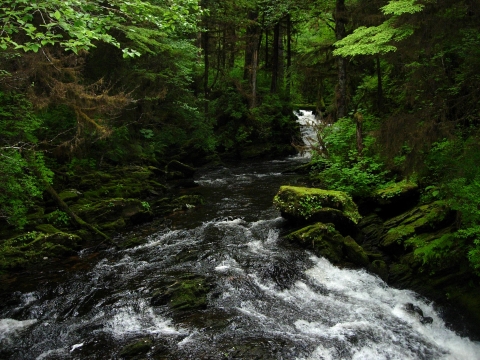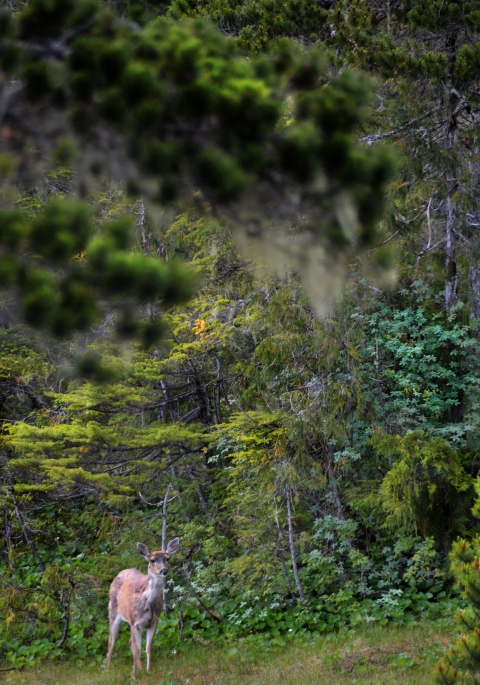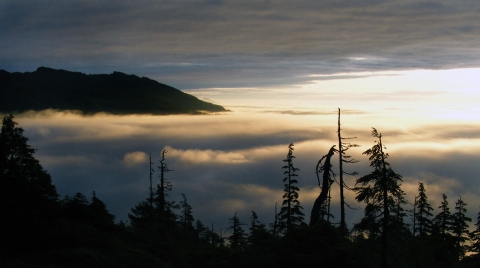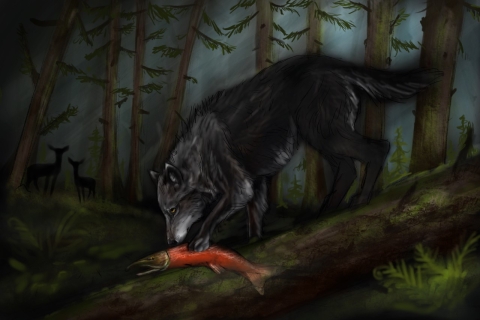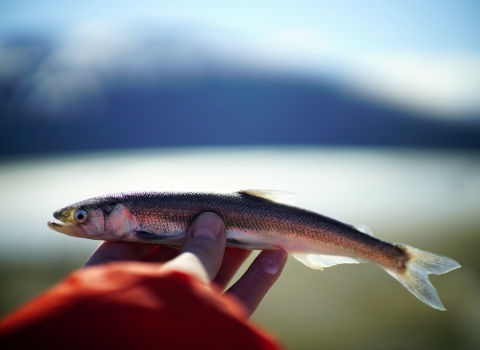Southeast Alaska — it’s wet here. With more than 200 inches of precipitation each year, this is one of the rainiest places in the United States behind Mt. Waialeale on Hawaii’s Kauai Island and a few locations on Maui.
Home to one of only seven rare coastal temperate rainforests in the world, Alaska’s southeast “panhandle” is carpeted by old growth trees like Western and mountain hemlock, Sitka spruce, and Alaska yellow cedar.
There are wolves here too. A smaller, darker-colored variant linked to the rainforest environment that dens in cavities beneath the big root systems of very large, old trees. Their dens have three things in common: they’re located in old growth, on elevated ground (an important consideration in such wet conditions) and within 100 meters of freshwater. Because of this specificity, dens tend to get reused by new generations. Pups are born mid-April through early July.
The Islands Wolf: Canis lupis ligoni
The Alexander Archipelago — over a thousand islands spanning about 300 miles — hugs the coast of Southeast Alaska. Today, the wolf that bears the archipelago’s name is primarily restricted to Alaska’s Tongass National Forest — especially the large islands south of Frederick Sound. Their range extends down the British Columbia coastline to Vancouver Island.
Like other island goers, movement is limited. Compared to the large movements mainland living affords, Alexander Archipelago wolves must navigate the emergent tops of underwater mountains surrounded by deep watery fjords.
Over the course of their 6–8 year lifespan, they make a living pursuing the Sitka black-tailed deer (a smaller cousin of the mule deer), beavers, Pacific salmon and even waterfowl, seals, marine invertebrates, and the occasional black bear.
Currently, scientists are debating two hypotheses for the descent of Alexander Archipelago wolves. For many years, scientists believed Alexander Archipelago wolves (often also referred to as Pacific or coastal wolves in the scientific literature) descended from grey wolf populations in the lower 48 states that moved northward along the coast from the Pacific Northwest. However, recent genetic evidence indicates they may have descended from grey wolves that crossed the Bering Land Bridge from Siberia and moved east and south into Alaska and Canada.
These island wolves are unique from the larger Interior Alaska (Yukon) variety. There are at least five environmentally and genetically distinct North American grey wolf populations, including the wolves of Alaska’s Alexander Archipelago.
Islands are places where fragility and strength can coexist. Innovative ways of surviving emerge from tough living, and uniqueness arises. It slips between big old trees in the form of a small wolf.
In Alaska we are shared stewards of world renowned natural resources and our nation’s last true wild places. Our hope is that each generation has the opportunity to live with, live from, discover and enjoy the wildness of this awe-inspiring land and the people who love and depend on it.


